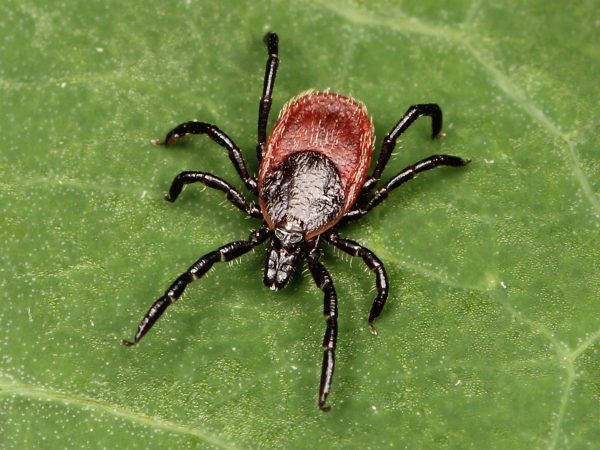 Parler
Parler Gab
Gab
Black-legged ticks spread Powassan virus
Infected female black-legged ticks (Ixodes scapularis) that bite humans transmit Powassan virus. Between 2008 and 2017, the majority of Powassan virus cases were diagnosed in and around the Great Lakes region. The virus has two lineages, one of which is the eer-tick virus. It was first identified in 1952. Many cases of Powassan virus are asymptomatic, but symptomatic cases can be deadly, reported the Centers for Disease Control and Prevention (CDC). Powassan virus may cause initial symptoms like fever, headache and vomiting. The most severe cases can involve neurological complications such as encephalitis or inflammation of the brain and meningitis. According to data, at least one in 10 neuro-invasive cases of Powassan virus are fatal. At least 50 percent of the survivors of these cases experience long-term neurological health impacts. (Related: Hiking danger: Powassan virus is a rare but real threat.)Ticks sampled tested positive for DTV
In a statement, Secretary Patrick McDonnell from the Pennsylvania Department of Environmental Protection (DEP) warned that the infection rate of ticks sampled from the Lawrence Township Recreational Park is "extremely high." He also said that deer tick virus transfers very quickly through the bite of an infected tick. Health outcomes from the deer tick virus are "more severe than [those of] other tick-borne illnesses typically seen in Pennsylvania," added McDonnell. The finding was first reported in January 2022 when the DEP's vector management program detected "an unusually high infection rate" with DTV. Data showed that of 25 ticks sampled from the park, a worrying 92 percent tested positive for DTV. The highest infection rate of DTV among ticks previously measured at a single site in America was only 25 percent. This is a rather small sample size, but Pennsylvania officials are worried about the almost pervasive infection of deer ticks. Powassan virus can be transmitted within 15 minutes of a tick bite. This is quicker than the time from a bite to infection for many other tick-borne diseases. For example, with Lyme disease, a tick needs to be attached to someone for more than 24 hours to transmit the disease. Historically, Powassan virus has been rare and there are no specific treatments. It has become more common in the U.S. in recent years. Between 2016 and 2020, there were 134 cases of Powassan virus reported in the country. Between 2011 and 2015, only 44 cases were reported. Annual cases of all tick-borne diseases reported to the CDC more than doubled between 2004 and 2019. There were 22,527 cases in 2004 but over 50,000 in 2019. Experts think this increase in infection rates could be traced to the expansion of the black-legged tick, the vector for both Powassan virus and Lyme disease. In a 2019 study published in the Journal of Infectious Diseases and Medical Microbiology, scientists predicted that "the number of [Lyme disease] cases in the United States will increase by over 20 percent in the coming decades." Increased temperatures and humidity may also contribute to the increased reproduction, survival and expansion of ticks. In a 2021 review from the journal Insects, study authors warned that black-legged ticks will continue to expand farther northward across Minnesota, the Dakotas and Alaska by 2050.Tips for preventing tick bites
Tick exposure can occur throughout the year but ticks are most active during the warmer months or from April to September. Make sure you know which ticks are most common in your area to prevent DTV and other diseases. Follow the tips below to prevent tick bites before you spend time outdoors, like going camping or hiking,- Know where to expect ticks. Ticks can be found in brushy, grassy or wooded areas. They can also be found on animals.
- You can also get ticks in your own yard or neighborhood, or from spending time outside walking your dog or gardening.
- Treat clothing and gear with insect repellent before going outdoors.
More related stories:
More than just Lyme: Ticks carry a collection of pathogens. Cause of cancer found to be more complex than previously thought: Lung cancer results from gene mutations that appear to work together. Ticks carrying Lyme disease thrive near California coast, study finds. Sources include: LiveScience.com CDC.gov Brighteon.comDr. Sherri Tenpenny and CJ Grace discuss link between bras and breast cancer – Brighteon.TV
By Kevin Hughes // Share
Governments continue to obscure COVID-19 vaccine data amid rising concerns over excess deaths
By patricklewis // Share
Tech giant Microsoft backs EXTINCTION with its support of carbon capture programs
By ramontomeydw // Share
Germany to resume arms exports to Israel despite repeated ceasefire violations
By isabelle // Share










